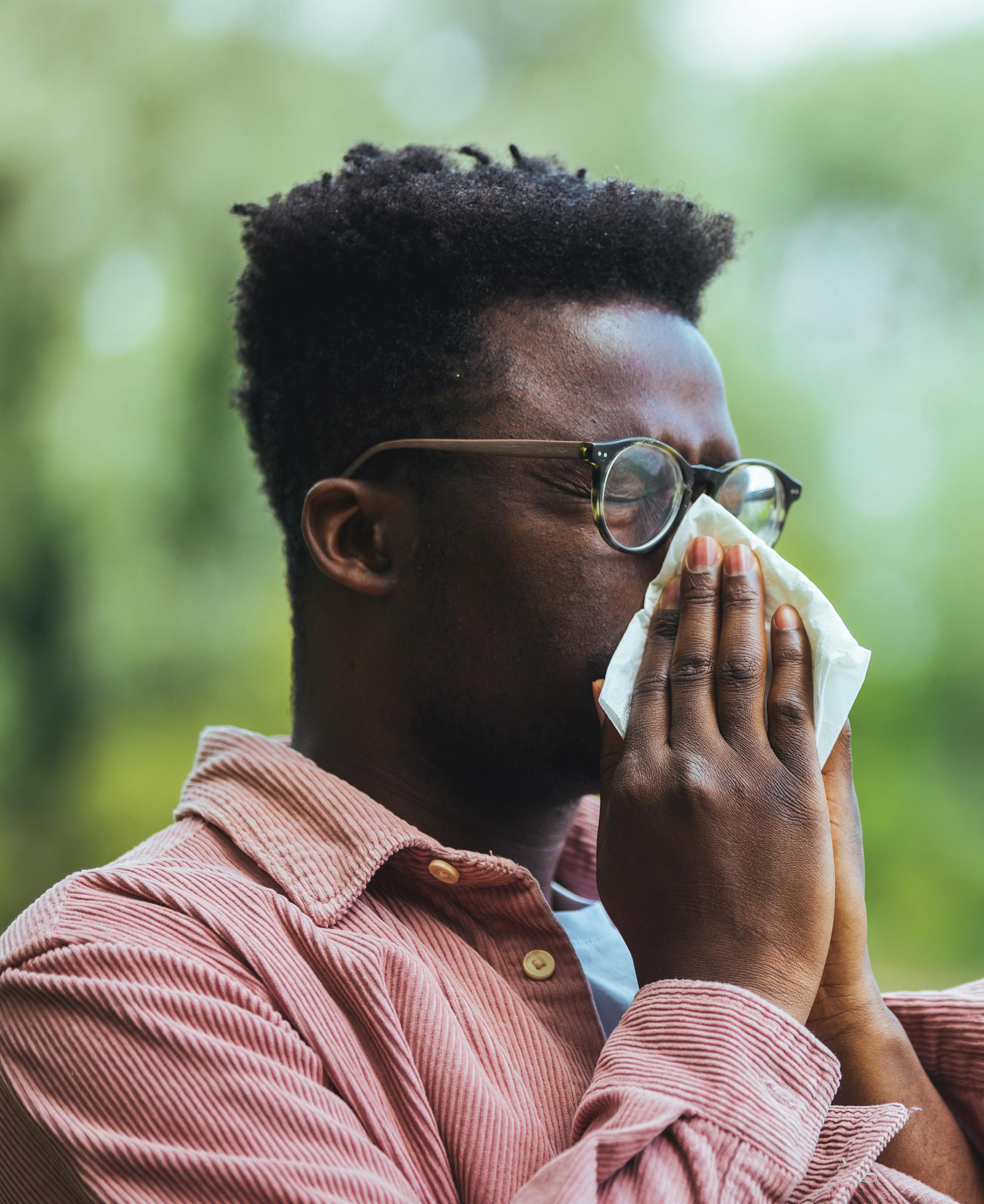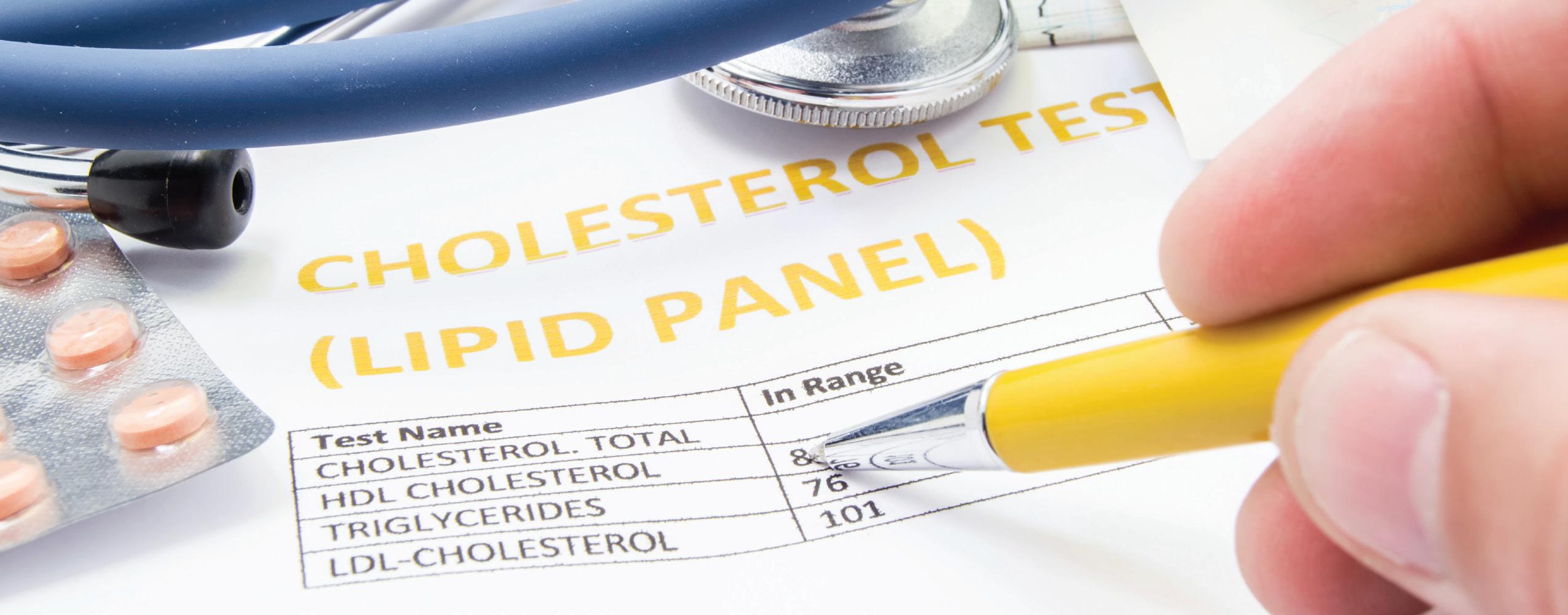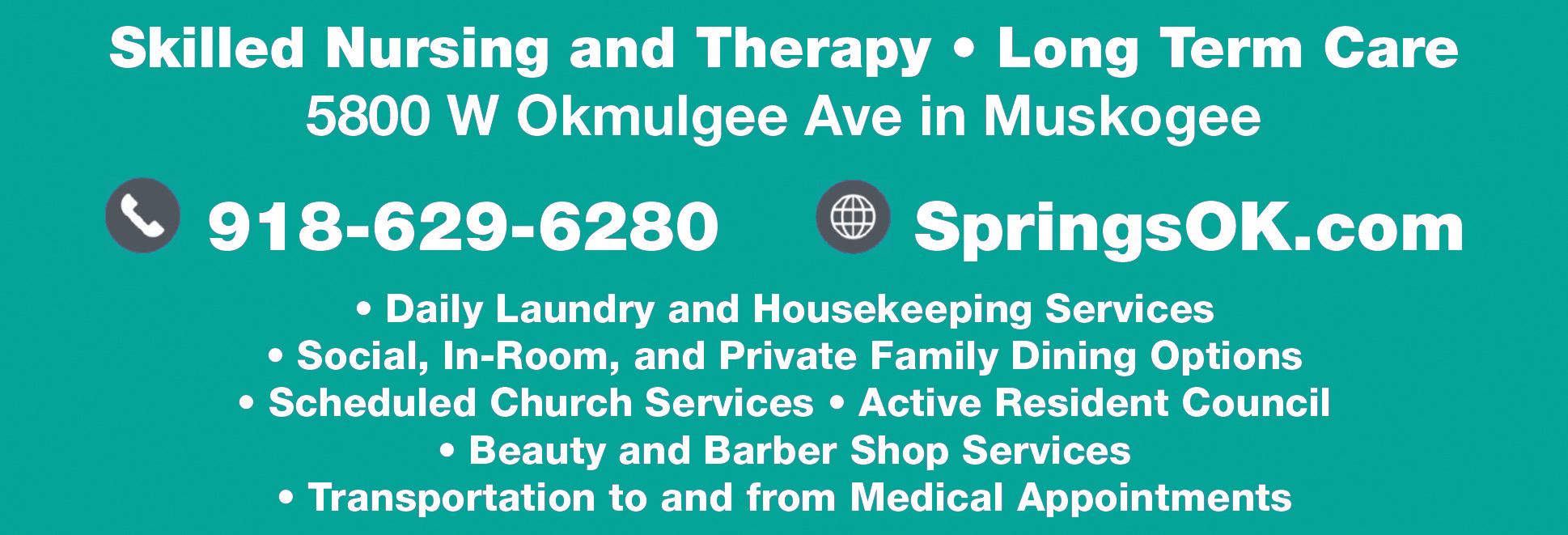




STROKE SYMP TOMS? B.E. F.A.S.T. AND CA LL 9-1-1.
Balance suddenly lost


Eyes suddenly blurred

Facedroopsonone side

Arms suddenly weak
Speech slurred, confused
Astroke is amedical emergency that can affect anyone at any age. Getting help from trained medical professionals as soon as possible is critical.
The certified Primary Stroke Center at Saint Francis Hospital Muskogee provides afull spectrum of stroke care—from diagnosis and treatment to rehabilitation, education and support—all right here, close to home.
For more information,pleasevisit saintfrancis.com/stroke.
SAINT FRANCIS HOSPITAL MUSKOGEE
300 Rockefeller Drive
Muskogee, Oklahoma 74401
Time &Terrible headache
Astroke is amedical emergency.Ifyou believe youoraloved one is exhibiting anysymptomsofstroke, notethe time symptoms first occurred andcall 9-1-1.











GBCHS has been aCertified HealthyBusinessatthe highest levelfor several yearsnow.We offer outpatientcounseling, evaluations, andtreatment for mental health andsubstance useconcerns.Weare in theprocessofdeveloping services forthe aging. We have 24-hourmobilecrisisresponsefor all ages and Urgent Recovery Care andCrisisStabilizationser vices foradults, regardlessof income.GCBHS is aproudpartner of theOklahomaDepartmentofMental Health &Substance AbuseSer vicesand arecertified,atthe highest leveland partiallyfundedbythem. We areaNARCAN hub! Just call us!!



IF YOUARE EXPERIENCINGA MENTAL HEALTH OR SUBSTANCE CRISIS PLEASE CALL 988. ATRAINED PROFESSIONALWILL ANSWER.WEHAVE24/7/365 MOBILE RESPONSESERVICES!




6 Eating habits
Small changes can have significant impact on your health.
10 Pesky allergies

Sufferers can lessen occurrences through avoidance, deep cleaning, treatments.
14 Health at work
Small changes at desk can have big health impact, building endurance and strength.
16 Isolation, loneliness
People may overlook loneliness, brushing it aside as something unworthy of attention.
18 Cooking can help Culinary arts instructor shows students how to eat healthier without difficulty.
22 High cholesterol
Controlling this number can lower risks for heart problems and stroke.
23 Preventing sickness
Research shows that many chronic issues are preventable if you stay on top of scheduled visits and wellness checks.


p hoto: Average daily intake keeps rising, by hundreds of calories, even as we produce a surplus of available food for consumption.

The U.S. in general does poorly in these rankings, and some states typically do worse than others, as well.
Taken together, the numbers seem to paint a grim portrait.
But we can turn these poor showings around, with one personal choice at a time. They really do start to add up over time.
The diet of a typical American is often weighted toward unhealthy choices. We get more than the recommended daily limits on calories derived from added
sugars, refined grains and solid fats. These diets also exceed recommended levels of sodium and saturated fat. Often times, the problem is simply the result of dietary choices. We don’t eat enough fresh vegetables, fruits and whole grains. As a result, the Centers for Disease Control and Prevention reports that the nationwide obesity rate has doubled since 1990.
Average daily intake keeps rising, by hundreds of
calories, even as we produce a surplus of available food for consumption. Often times, the extra calories are derived from very familiar places: fast-food restaurants. These franchises have more than doubled since the 1970s. The problem is made worse by an over-reliance on processed and packaged foods, coupled with sugary drinks. They’re more often consumed by those from so-called “food deserts,” where millions of Americans — including their vulnerable children – live too far away to regularly shop at a supermarket.

Sodium intake continues to be a huge issue in America, with many adults consuming more than 1,000 milligrams a day above the federal guidelines. Total fat intake has also skyrocketed, doubling since 1980. Blame often goes to soda, dairy and grain desserts, pizza and fried foods, but there aren’t always convenient choices to eat healthier. That’s led to a focus on correcting food deserts, and in addressing

the growing number of families who suffer from food insecurity.
In the meantime, West Virginia (38.1%), Mississippi (37.3%), and Oklahoma (36.5%) had the highest obesity rates, while the least obese places were led by Colorado (22.6%) the District of Columbia (23%) and Hawaii (23.8%), according to the CDC. Even though Coloradoans fare best, those numbers are still up 7.6% since 1990.
We


Ms.Garza received her degreeasaFamily Nurse Practitioner from the Universityof Ok lahoma in 2015 and is certified by the American AcademyofNurse Practitioners with afocus in women’s health.
Ms.Garza specializes in family practiceand has experienceinurology and gynecology. She has practiced in both the private and public sectors in Muskogee and the surrounding communities

Ms.Garza has atrue passion forwellness and centers her patientcarearound health promotion and disease prevention.
Azzam Almounajjed, M.D. Internal Medicine



It’s amazing how much misery can be associated with everyday interactions














Blame exposure to everything from the environment to pets, from medications to food.
But there’s a way to avoid certain irritants, and to lessen the impact of the sneezing, scratchy throats and itchy eyes which may follow. If left unchecked, sufferers are at risk for more serious health issues.
Talk to your doctor if you begin to experience a new allergic reaction — or if your symptoms seem to be worsening. In some very serious cases, a visit to a local emergency room may be required to get more immediate care.

Allergies are actually the result of our immune system’s overreaction to foreign substances, according to the Mayo Clinic. Our antibodies identify these substances as harmful, even though they may not be. The most common allergies involve many everyday found things. Airborne allergens include animal dander, pollen, mold and dust mites. Certain foods may also produce a reaction, including wheat, peanuts, seafood, tree nuts, milk and eggs, among others. Many are allergic to insect bites or stings, including bees, ant and wasps. Penicillin and other related antibiotics are allergens for some. Latex is a common skin irritant.
In most cases, the symptoms of an allergic reaction mimic a cold. The difference is in how quickly these reactions take hold. You may quickly develop a runny nose, itchy eyes, rashes, swelling, sneezing or breathing problems as your immune system cranks up. Check for sensitivities and talk to your doctor about any family history with allergies. Many of these reactions are minor, but in the severest of cases a life-threatening situation known as anaphylaxis may occur. In that case, immediate medical care is needed.
Unfortunately for sufferers, there is no cure for allergies. Still, you can help lessen the occurrences through avoidance, deep cleaning and certain treatments. Allergy meds, including antihistamines and nasal-saline sprays, are typically effective — even at over-thecounter strengths. Check with your doctor, however, before starting any regular regimen of medicine. You may have to avoid time spent with certain pets. For those with a sensitivity to mold, better ventilation and the use of a dehumidifier can reduce moisture. More frequent housecleaning and bedding wash schedules can lessen the impact for those who react poorly to dust or mites.
edentary lifestyles can lead to a variety of worrisome health outcomes, including diabetes, mobility issues and obesity.
Sometimes, your busy work schedule plays a role. We can become so engrossed in what we do at our workstations that we never get up and move around. Some are so busy that they don’t even leave for lunch, eating right at their desks.
Break the cycle by getting healthier while you work. Bring a few coworkers along as you make these important lifestyle changes. Like other office projects, it’ll be easier if you work together as a team.

Desk jobs, jobs where we remain seated, and other positions that require us to remain at a workstation keep us from moving around on a regular basis. Even those who hit the gym a few times a week still find themselves in a static position for hours on end. That can tip the balance, even with a committed exercise routine. Then there are those who are so committed to work that they don’t feel they have the time for anything else other than rushing home.
Unfortunately, those who sit for lengthy periods of time are at greater risk for bone, joint and posture problems. Heart disease, stroke and diabetes are some of the conditions associated with sedentary lifestyles. Lower energy levels can hamper mental alertness, directly impacting your work.
Beginners may find that developing a solid plan involves weeks or months as you slowly incorporate more and more physical activity into your routine. In some cases, you may have to get very creative in order to incorporate regular movement into your busy schedule. Start by adding “passive” exercise into your work life: Park further away from the building or, if possible, bike or walk to work. Take the stairs, rather than hopping on the elevator. Get up and walk over to a coworkers desk to discuss a project instead of simply emailing.
These small changes can have a big health impact – and you’ll be building endurance and strength. Next, incorporate regular exercise time, at home or at the gym. This may need to be immediately before or after work hours — or later in the evening, after other obligations at home have been dealt with. Some people even convert a portion of their lunch break.

ing inward to deal with their problems. Emotional and physical wellness may suffer if they feel unable to cope.
People may overlook loneliness, brushing it aside as something unworthy of real scientific exploration and consistent personal attention. But this is a natural response to isolation, and feeling like a social connection has been lost can have very real impacts.

They say it takes a village to raise a child. The same may also be said when trying to shake the blues. Surround yourself with helpful individuals who can provide the safety net we all sometimes need when life takes a difficult turn.
Experts have consistently proven that those who are lonely deal with more mental health and physical problems than others with stronger connections. So, creating and maintaining positive relationships at home and at work can have a huge impact on our general well being. We’re also encouraged to reach out to professionals, as needed. People without these important bonds may become more reclusive, turn-
Depression sufferers have shown improvement with their symptoms once they started having more positive interactions with the world around them. At the same time, those who experience loneliness increase their risk of early death by a whopping 50%, according to the American Heart Association. Being isolated was also shown to increase coronary artery disease and stroke risks by as much as 32%. Lonely people are often less active, and studies confirm that those who eat alone tend to have a less healthy diet.

If you’ve found yourself isolated, as so many have after emerging from the quarantine era, there are ways to slowly reconnect with friends, extended family and your community. Start by joining a local club or church. Call up somebody you haven’t seen in a while and arrange a fun activity. Rebook that long-delayed appointment with your mental health professional. Enroll in a fun class at the local community college, or sign up for a gym membership. Join a professional organization, where you’ll find people who share your work goals. Interacting with business owners or workers in your area can help smooth the way for a return to other social situations.
Friends, family and health care professionals can help you bounce back after having a bad day.
Sometimes building a stronger support network is everything that’s needed












With a little searing and seasoning, Indian Capital Technology Center

culinary arts instructor Jeff Howard showed his students healthy ways to prepare chicken legs.
"Chicken is relatively healthy," Howard said. "It's low fat, it has protein. But how do we usually prepare it? We fry it, and we usually put breading on it. So we add fat and carbohydrates."
This time, however, Howard sprinkled the legs with pepper and salt. He seared two in a frying pan with a small amount of olive oil. He grilled two others in a panini press before baking them. He sprinkled the legs with pepper and kosher salt.
"Because there's skin all the way around them, I'm going to start with the heavier seasoned side," he said while laying the drumsticks in the pan. "I don't have hardly anything in there. All I'm going to do is season this to the point it sears all the way around. Use olive oil, sear and bake."
Healthy cooking is one path to healthy eating. It's one of many aspects of cooking Howard teaches his students.
Howard and students recently critiqued a healthy recipe submitted to the Muskogee Phoenix. The recipe included canned beans, which students said could be high in sodium. The recipe also featured an onion and avocado topping.
"Avocados are good items to put on these recipes, especially a vegan recipe, because avocados are going to add two different things: Fat and protein," Howard said. "In general, the recipe would have a relatively low fat content, but it lacks any seasoning besides the residual com-
ing from the canned items and the chili powder. There is not any salt or pepper. Also, in most chili spices there is also cumin, coriander, Garlic powder, onion powder and possibly cayenne for spice."
He said a healthier recipe would have used fresh beans, tomatoes and seasonings or herbs.

"Canned products tend to have a high amount of sodium for preservatives," he said. "Also, the onion added at the end for garnish might be better added at the beginning for aromatics and flavor. It also, may not be 'Vegan'
as chili beans sometimes have the addition of animal fat."
Fats, or lipids, and proteins are among six categories of nutrients. Others include carbohydrates, vitamins, minerals and water. All categories are important in proper balance, Howard said.
"If we don't intake enough (of a nutrient), then our bodies are going to find it," he said. But, "you can overdose on water, you can overdose on vitamins and minerals. So we have to make sure we watch our intake in all these areas. We talk about a balanced diet."
Vegan Chili
Claremore resident Jennifer Adams submitted this vegan chili recipe to the Muskogee phoenix.
» 1 cup uncooked lentils
» 2 cups vegetable broth
» 2 8-ounce cans tomato sauce
» 1 can ro-tel diced tomatoes
» 1 can chili beans
» 3 tablespoons chili powder
» 2 cloves garlic
Cook lentils in broth for about 10 minutes and then add remaining ingredients. You can also add all ingredients and slow cook on low for four to six hours hours. Serve with diced onions and avocados.
Many foods are inflammatory, which could cause a person to be overweight.
"Anything with salt in it is an inflammatory item," he said. "Salt encourages water retention. Dairy is a huge inflammatory item. Red meats."
Non-inflammatory items include spices, fresh honey, vegetables, fruit, white meat, and most seafood, he said.
Nutrition goes beyond what people eat.
"When we talk about nutrition in food itself, somebody says vegetables or fruits, those are always nutritious, right? Not necessarily," he said. "Green beans are better than eating a bunch of fried food, but canned or processed products tend to have a lot of salt and sodium,
LEFt: Herbs such as parsley, and healthy fats such as olive oil can be nutritious aids in cooking.

BELoW: An array of herbs and spices can add flavor to foods without adding a lot of calories or fat. (CATHY

and sodium is not good from the standpoint of someone needing to lower their salt intake or trying to lose weight."
Packaging and preparation also can affect nutritional value, he said.
"A lot of people think shopping for healthy food is more expensive than shopping for processed food. That's not necessarily true," Howard said. "It depends on what you buy. It depends on whether you buy fresh or frozen. It really depends, especially if you don't have time and you're just going to get fast food."
Shoppers have to know what they're looking for, he said.
"We live in a very sparse fresh food market," he said. "If you're in a big city, you have a lot more to shop for. I live in Tulsa, so I have Sprouts and Aldi's, Reasor's, Whole Foods, Trader Joe's. We have lots of different options. Here in Muskogee and in our smaller outlying cities you don't have a lot of options, so you have to pick and choose. You have to look and see what those options are."
Fresh food options in Muskogee include supermarkets, Cattleman's Fine Meats, Watson's Farms, Arnold Fruit Co., and seasonal farmers' markets in Muskogee, Wagoner and other area communities. Howard advised seeking other sources, as well.

"If I've got a friend down the street who grows their own corn. That corn is going to be better than buying fresh corn in a grocery store because you don't know how old it (grocery corn) is, where it's been," he said. "Sometimes Walmart has a better product than Aldi's or Trader Joe's because they are able to buy stuff in volume. But, for the most part, those smaller specialty stores are going to have a better buy because they're not trying to buy something in bulk."
Buying produce in season also helps, he said.
"During the peach festival, we're buying peaches because they're ripe, they're local and they're the best 'right now'," he said.
jeopardy of a serious heart problem. So can having not enough of the other kind of cholesterol. Low density lipoprotein, or LDL, is typically described as “bad” cholesterol, while high density lipoprotein is “good.” Doctors will also keep an eye on triglycerides, another form of fat made in the body. These numbers might be elevated based on being overweight, physical inactivity, diabetes, smoking, alcohol consumption, or eating too many fats or carbs.
This waxy substance is found in many animal-based food sources, like red meat, poultry and dairy. When intake of those fat-rich foods gets out of balance, the liver produces more cholesterol — and that can collect in our artery system.
The heart has to work harder to circulate blood. If plaque breaks loose, it may create blockages leading to the brain that cause a stroke, while blockages around the heart can lead to a heart attack.
It’s critically important that we keep these numbers in check in order to live healthier, longer lives. Here’s a look at the types of cholesterol, and how they impact our health:
Turns out, not all cholesterol is bad. It’s just that too much or one kind of cholesterol can put you in

Dietary choices aren’t the only things to keep a close eye on: Smokers and those with high blood pressure and diabetes are also at higher risk of heart disease. Cholesterol levels can also be impacted by age, gender and family history. Any of these factors may lead to deposits of thick, hard plaque that narrow the arteries, in a process known as atherosclerosis.
Your doctor will take regular measurements of your cholesterol in order to create a baseline, then make recommendations if the results don’t align properly. This will be done with a blood test, and that may require a short fast beforehand. After the numbers have been run, you could be encouraged to make different dietary choices, create or increase your activity regimen, or perhaps begin regularly taking prescriptions. These medications would play a critical role in lowering your risk of stroke and heart attack, depending on your specific situation, so follow the doctor’s instructions to the letter.
Your body naturally makes all the cholesterol that’s needed, but other factors can push us over the line.
measures can have a huge impact on health
Research shows that many chronic issues are preventable if you stay on top of scheduled visits and wellness checks.
Your physician will run regular screenings to track high blood pressure, diabetes, weight gain, vision problems and cancers, among others. Discuss any other concerns you may have based on how you’re feeling, and they may suggest other tests.
Here are some of the most common screenings you’ll undergo.
Women between 30 and 65 should have Pap and HPV screenings every five years. Pap tests collect cells from the cervix in order to test for cervical cancer. Most of those who receive abnormal cervical results are either experiencing early changes that can be monitored or will be diagnosed with human papillomavirus infections, according to the National Cancer Institute. Routine exams will also discuss how you’re feeling in order to gauge the onset of depression.
Women should have yearly mammograms, since clinical breast exams save so many lives. Other tests or the frequency of testing may be impacted by any chronic diseases you may be suffering, or considered at high risk of contracting.

Regular blood pressure screenings are recommended, in particular for those with readings that are higher than 120/80, according to the experts. Men 35 and
older should be checked for lipid disorders, and those younger if they are at high risk of coronary artery disease. These fats include so-called “bad cholesterol,” or low density lipoproteins, as well as fatty acids known as triglycerides. High lipids are associated with diabetes, kidney and liver disease, and hypothyroidism.
Talk to your doctor about prostate cancer screenings, the timing of which can vary depending on health and age factors. You’ll either undergo a digital examination or a prostate-specific antigen test. Men between 65 and 75 who have smoked should get tested for abdominal aortic aneurysms, which when ruptured can lead to severe or even deadly internal bleeding.
Adults should be checked for diabetes every three years, in particular if you have high sustained blood pressure of 135 over 80. Everyone should undergo regular baseline comprehensive vision exams. Colorectal cancer screenings are also recommended as we age. Discuss your risks with a health care provider, who will help you make informed decisions about these and other screenings. Your current medical condition and specific family history will play a role in deciding.








